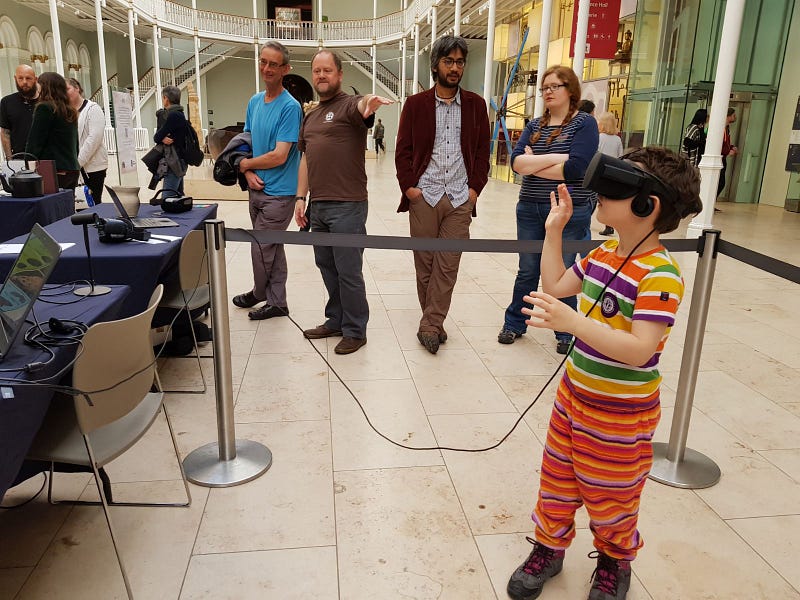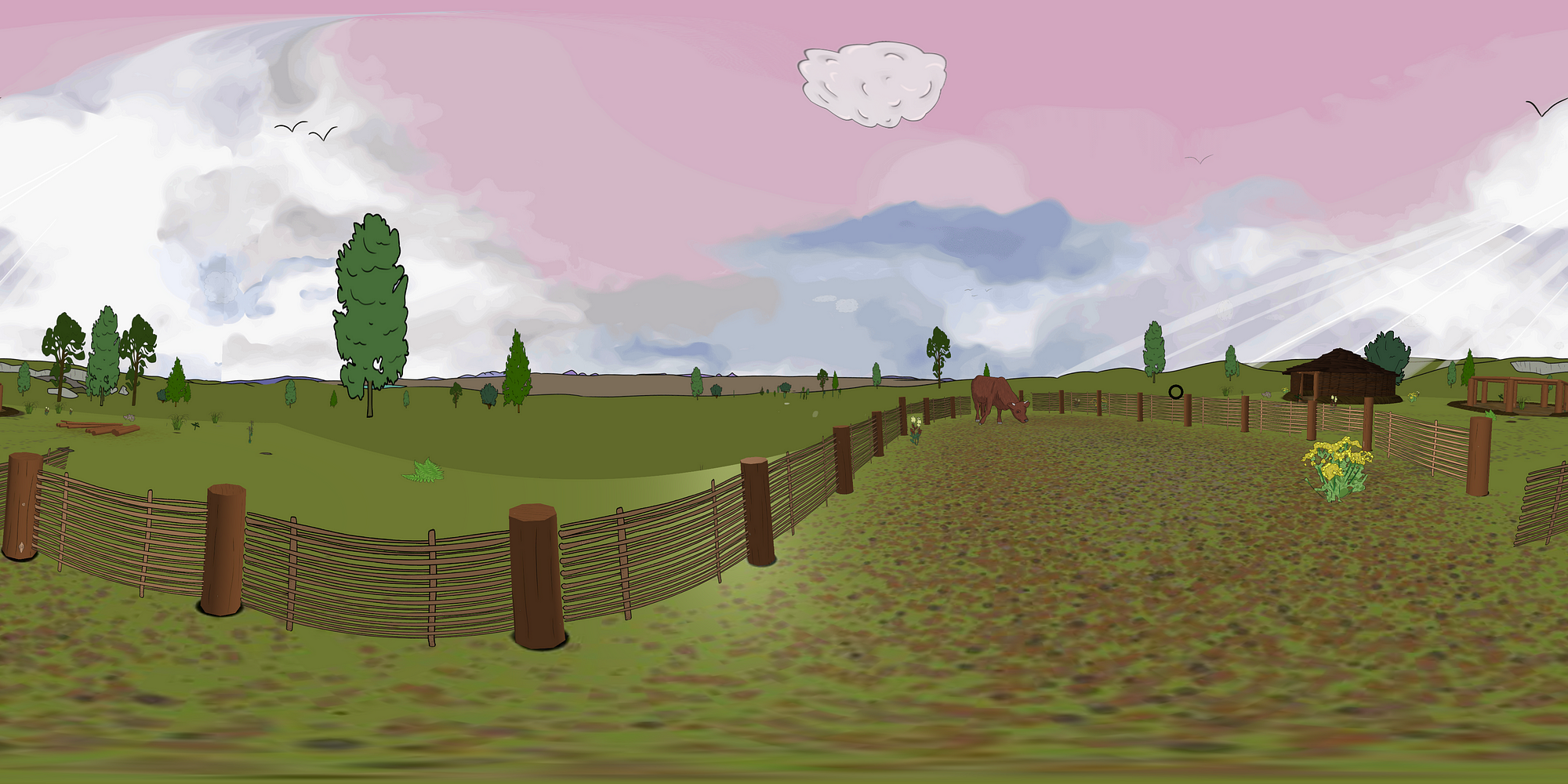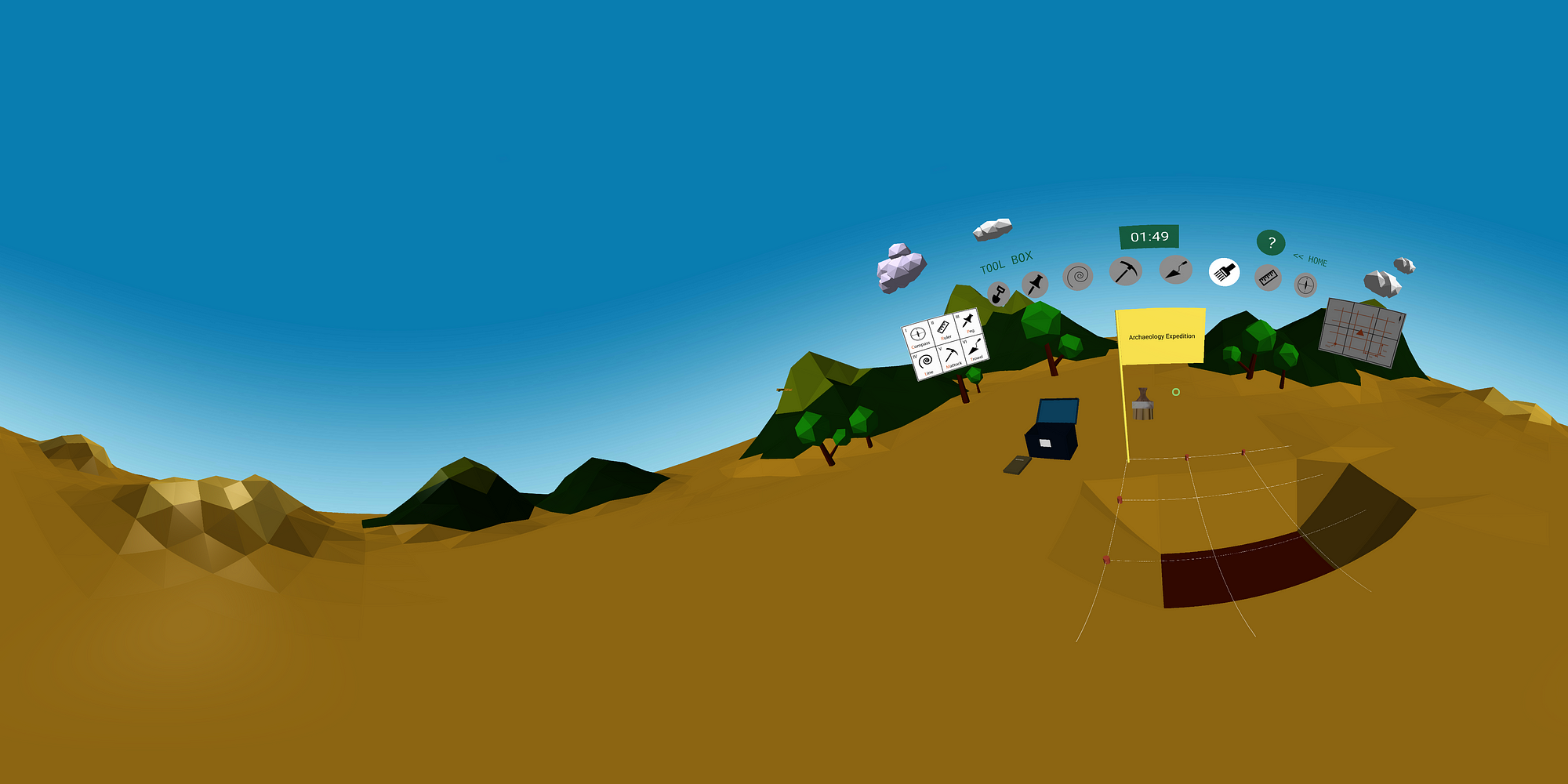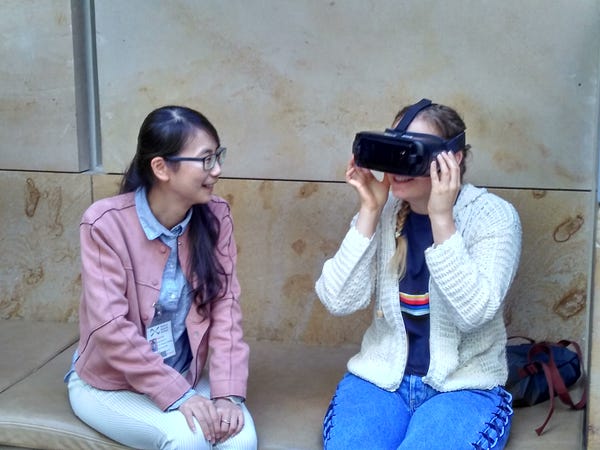Ava: a WebVR Archaeological experience
Collaboration between Samsung Internet, the University of Edinburgh and the Achavanich Beaker Burial project

An attendee at the Explorathon event in the Museum of Edinburgh trying out the WebVR experiences, 29th September.
Earlier this year I went to Edinburgh to meet some MSc students and archaeologists that were interested in exploring VR technology. The objective, in words of archaeologist Hannah McGlynn, one of the organizers of this collaboration, was to “take academic research and innovative technology and fuse them into an educational experience all can enjoy”.
The results of this week long contact are “Ava” and “Finding Ava”, two WebVR archaeological experiences that show how a learning journey in a different discipline can benefit from the use of VR when multidisciplinary teams work together. These applications, described by McGlynn as “exciting, inclusive and fascinating”, “allowed people to interact with the past in a way they haven’t been able to before”. They’re also a showcase for the innovation that WebVR enables by lowering the barrier of entry to the creation of virtual experiences.
We created experiences based on research by the Achavanich Beaker Burial project around ‘Ava’, a young woman buried around 4250 years ago in Caithness, north of Scotland. They are meant to be educational experiences about the archaeological process, as well as valuable tools in spreading the message about the findings of the project. Both experiences are built with the A-Frame framework, and are detailed below.
Ava

Ava WebVR experience (https://samsunginter.net/ava)
‘Ava’ is a cartoon, WebVR experience that depicts archaeological information about… Ava. It is based on drawings by the lead archaeologist of the Achavanich Beaker Burial project, Maya Hoole, which “really ignited the imagination of children and got them to think about the archaeology and what the landscape looked like”, McGlynn says. She continued to explain how one child, “approximately 5 years old, was asked what he could see, his response was “it’s so full of niceness”. Another child responded with a discussion about the roundhouse and what the homes of the Scottish Highlands would have looked like in the Bronze Age.”
“it’s so full of niceness”
The virtual environment in Ava is based on what is believed to be a typical scene from the time. Along with the Ava’s skeleton, archaeologists recovered a beaker, as well as the shoulder of a small cow, and three pieces of flint. Tiny pieces of pollen were found on the surface of the beaker, which were used to identify the types of plants growing in the area at this time. Drawings represent the vegetation and different elements found from this research, and the experience tours the user around the scene for them to appreciate the details of the structure and environment. You can find more information about the experience here.
One of the unique aspects of this experience is that it is mostly based on 2D drawings, giving it a very particular look and feel, where elements rotate towards the camera in order to maintain the right perspective in the scene. (Click here for a quick image preview of the experience)
Finding Ava

Finding Ava, a WebVR roomscape like game (https://solemom.github.io/Finding-AVA/Finding-AVA/)

Xiangjun Liu showing her WebVR experience at the National Museum of Scotland
‘Finding Ava’ is the second WebVR experience derived from the research. This application — developed by Xiangjun Liu, a Masters student from the school of Informatics of the University of Edinburgh — is a roomscape-like game in which users must complete three phases of an archaeological process. In this interactive experience, the user must dig Ava’s remains, classify them and finally do some research on them. (Click here for a quick image preview of the experience). In Xiangjun’s experience, “WebVR is amazing and promising because it makes VR experience easily built and accessible”, but she added that “it still has some limitations especially in terms of capacity”, referring to when dealing with detailed 3D scans of some assets in the experience.
Democratizing VR
WebVR is a topic we cover a lot from the Samsung Internet perspective. We see a lot of value in its ease of use and lack of friction for consumers, and a fast and convenient deployment that aids mainstream adoption of virtual reality (VR) and augmented reality (AR). As with previous examples of technical demos and collaborations we have done in the past, it allows us to reach a wider group of users than traditional high-end VR experiences allow, making WebVR an interesting choice for distributing and sharing immersive experiences.
In this specific case, the overall feedback from other researchers at the National Museum of Scotland was one of overwhelming interest and many from the University of Edinburgh expressed desire to collaborate further on other projects using this technology. I believe that this partnership of WebVR and Archaeological research is only in its beginning.

A browser is all you need to be able to experience WebVR content
Acknowledgements
Special thanks to Archaeologists Maya Hoole and Hannah McGlynn, as well as staff from the School of Informatics of the University of Edinburgh for enabling this approach with their students.
Tagged in Virtual Reality, Webvr, Archaeology, Media Archaeology, Web Development
By Diego González on October 5, 2017.
